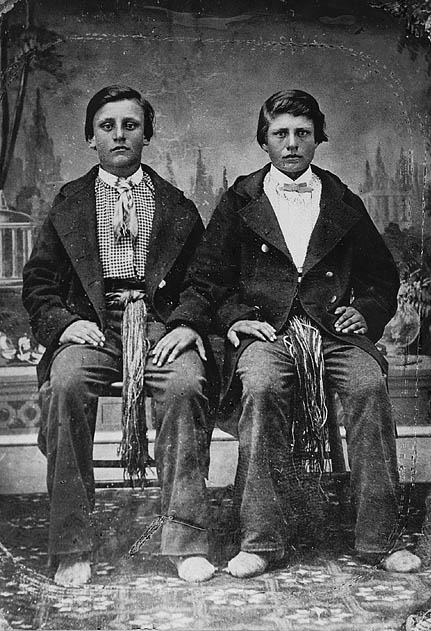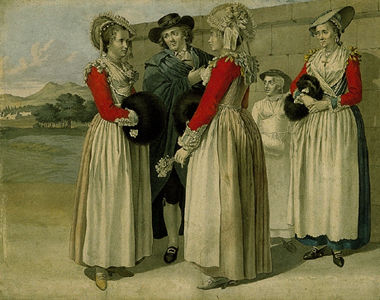Browse "Arts & Culture"
-
Article
Arkells
Arena rockers Arkells formed in Hamilton, Ontario, in 2004. Since releasing their debut album, Jackson Square (2008), the band has won nine Juno Awards and been nominated 17 times. They currently hold the record for most wins by a band in the Group of the Year category with six. They also won for New Group of the Year in 2010 and for Rock Album of the Year in 2015 and 2019. Their hit songs include “Leather Jacket,” “11:11” and the sports anthem “Knocking at the Door.”
"https://d2ttikhf7xbzbs.cloudfront.net/28521848541_14fce39945_c.jpg" // resources/views/front/categories/view.blade.php
https://d2ttikhf7xbzbs.cloudfront.net/28521848541_14fce39945_c.jpg
-
"https://development.thecanadianencyclopedia.ca/images/tce_placeholder.jpg?v=e9dca980c9bdb3aa11e832e7ea94f5d9" // resources/views/front/categories/view.blade.php
https://development.thecanadianencyclopedia.ca/images/tce_placeholder.jpg?v=e9dca980c9bdb3aa11e832e7ea94f5d9
-
Article
Armed Forces Bands in Canada
Large regimental bands first came to Canada in the late 18th century. By 1869, there were some 46 bands in the Canadian militia. The first regular armed forces bands in Canada were formed in 1899. Their main purpose has been to provide music for military or public functions. As of 2023, there were a total of 73 bands in the Canadian Armed Forces: 53 in the Army, 12 in the Air Force, and 8 in the Navy.
"https://d2ttikhf7xbzbs.cloudfront.net/media/media/1007px-438_Squadron_RCAF_Band_1960s.jpg" // resources/views/front/categories/view.blade.php
https://d2ttikhf7xbzbs.cloudfront.net/media/media/1007px-438_Squadron_RCAF_Band_1960s.jpg
-
Article
Armenian Music in Canada
Beginning about 1900, but mostly from 1950 to 1965, some 20,000 Armenians emigrated to Canada from the Middle East.
"https://development.thecanadianencyclopedia.ca/images/tce_placeholder.jpg?v=e9dca980c9bdb3aa11e832e7ea94f5d9" // resources/views/front/categories/view.blade.php
https://development.thecanadianencyclopedia.ca/images/tce_placeholder.jpg?v=e9dca980c9bdb3aa11e832e7ea94f5d9
-
Article
Arrowhead Sash
Traditionally made of wool and intricately finger-woven into a colourful lengthwise “zigzag” pattern, they have numerous names, including “arrowhead,” “Indian,” “Métis” and “voyageur” sashes.
"https://d2ttikhf7xbzbs.cloudfront.net/media/media/4216020a-f88c-4f1d-a5f1-d6b4b361720e.jpg" // resources/views/front/categories/view.blade.php
https://d2ttikhf7xbzbs.cloudfront.net/media/media/4216020a-f88c-4f1d-a5f1-d6b4b361720e.jpg
-
Article
Art
Objects of curiosity as well as of conquest, the Indigenous people of the New World were first depicted on maps by illustrators who had no direct knowledge of their subject.
"https://d2ttikhf7xbzbs.cloudfront.net/media/media/7950f0eb-9670-402a-a0b7-105831184703.mov" // resources/views/front/categories/view.blade.php
https://d2ttikhf7xbzbs.cloudfront.net/media/media/7950f0eb-9670-402a-a0b7-105831184703.mov -
Article
Editorial: Canadian Art and the Great War
The following article is an editorial written by The Canadian Encyclopedia staff. Editorials are not usually updated. Canadian painting in the 19th century tended towards the pastoral. It depicted idyllic scenes of rural life and represented the country as a wondrous Eden. Canadian painter Homer Watson, under the influence of such American masters as Frederic Edwin Church and Albert Bierstadt, created images that are serene and suffused with golden light. In On the Mohawk River (1878), for instance, a lazy river ambles between tall, overhanging trees; in the background is a light-struck mountain. In Watson’s world, nature is peaceful, unthreatening and perhaps even sacred.
"https://d2ttikhf7xbzbs.cloudfront.net/media/media/62472ac0-198a-4d62-b24b-61a481415215.jpg" // resources/views/front/categories/view.blade.php
https://d2ttikhf7xbzbs.cloudfront.net/media/media/62472ac0-198a-4d62-b24b-61a481415215.jpg
-
Article
Art Association of Montreal
The Art Association of Montreal, the forerunner of the Montreal Museum of Fine Arts, was founded in 1860.
"https://development.thecanadianencyclopedia.ca/images/tce_placeholder.jpg?v=e9dca980c9bdb3aa11e832e7ea94f5d9" // resources/views/front/categories/view.blade.php
https://development.thecanadianencyclopedia.ca/images/tce_placeholder.jpg?v=e9dca980c9bdb3aa11e832e7ea94f5d9
-
Article
Art Conservation and Restoration
Art Conservation and Restoration, see Conservation of Movable Cultural Property.
"https://development.thecanadianencyclopedia.ca/images/tce_placeholder.jpg?v=e9dca980c9bdb3aa11e832e7ea94f5d9" // resources/views/front/categories/view.blade.php
https://development.thecanadianencyclopedia.ca/images/tce_placeholder.jpg?v=e9dca980c9bdb3aa11e832e7ea94f5d9
-
Article
Art Dealers
Art dealers in Canada have served as art dealers everywhere, not only as sellers of art but as tastemakers. Since they act as a link between the work of art and the art-buying public, they have an important role in the identification of who is important in Canadian art.
"https://development.thecanadianencyclopedia.ca/images/tce_placeholder.jpg?v=e9dca980c9bdb3aa11e832e7ea94f5d9" // resources/views/front/categories/view.blade.php
https://development.thecanadianencyclopedia.ca/images/tce_placeholder.jpg?v=e9dca980c9bdb3aa11e832e7ea94f5d9
-
Article
Art Education
William Berczy, circa 1781-82, watercolour (courtesy NGC). Art Education Art Education is a term that has referred historically to the intensive training given to artists for professional or personal purposes. The three principal contexts for this instruction have been within the apprenticeship system, in specialized institutions such as art academies or art schools, and, more recently, as an aspect of a wider curriculum offered in colleges, arts and crafts schools, universities and private educational institutions....
"https://d2ttikhf7xbzbs.cloudfront.net/media/media/3edbe959-558e-4429-a792-d9691311e90e.jpg" // resources/views/front/categories/view.blade.php
https://d2ttikhf7xbzbs.cloudfront.net/media/media/3edbe959-558e-4429-a792-d9691311e90e.jpg
-
"https://d2ttikhf7xbzbs.cloudfront.net/media/media/0c77d7d7-c6e8-4525-b09e-16a1810d2181.jpg" // resources/views/front/categories/view.blade.php
https://d2ttikhf7xbzbs.cloudfront.net/media/media/0c77d7d7-c6e8-4525-b09e-16a1810d2181.jpg
-
Article
Section 23 and Francophone Education outside of Quebec
Section 23 of the Canadian Charter of Rights and Freedoms ensures the right to instruction in French or English to the children of the francophone and anglophone minority communities in all of Canada’s provinces. Section 23 allows francophones to establish French-language school boards in each of the majority-anglophone provinces. Thanks to this key provision of the Charter, francophones outside of Quebec and anglophones in Quebec can pursue their education in their own language.
"https://d2ttikhf7xbzbs.cloudfront.net/media/media/cole_franocité.jfif" // resources/views/front/categories/view.blade.php
https://d2ttikhf7xbzbs.cloudfront.net/media/media/cole_franocité.jfif -
Article
Artists' Organizations
The history of visual artists' groups in Canada is filled with short-lived societies which have had a major influence on both professional and amateur artists.
"https://d2ttikhf7xbzbs.cloudfront.net/media/media/c3db7f0c-c688-41f1-ae20-f5ad17a26cfd.jpg" // resources/views/front/categories/view.blade.php
https://d2ttikhf7xbzbs.cloudfront.net/media/media/c3db7f0c-c688-41f1-ae20-f5ad17a26cfd.jpg
-
Article
Arts and Crafts Movement in Canada
The Arts and Crafts movement in Canada consisted of architects, teachers, and craftspeople who worked with progressive patrons to integrate beautiful handcraftsmanship into everyday living.
"https://development.thecanadianencyclopedia.ca/images/tce_placeholder.jpg?v=e9dca980c9bdb3aa11e832e7ea94f5d9" // resources/views/front/categories/view.blade.php
https://development.thecanadianencyclopedia.ca/images/tce_placeholder.jpg?v=e9dca980c9bdb3aa11e832e7ea94f5d9


